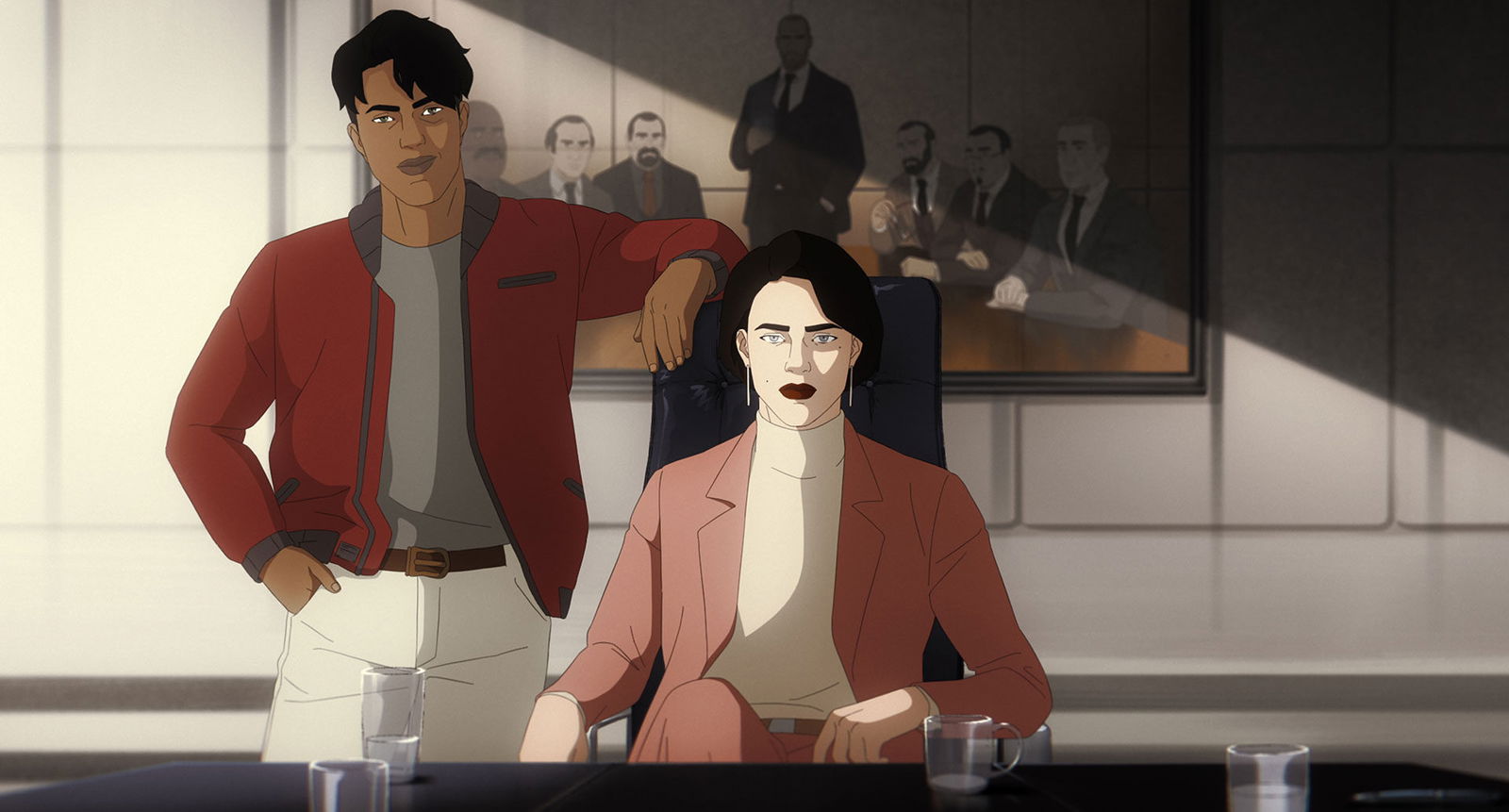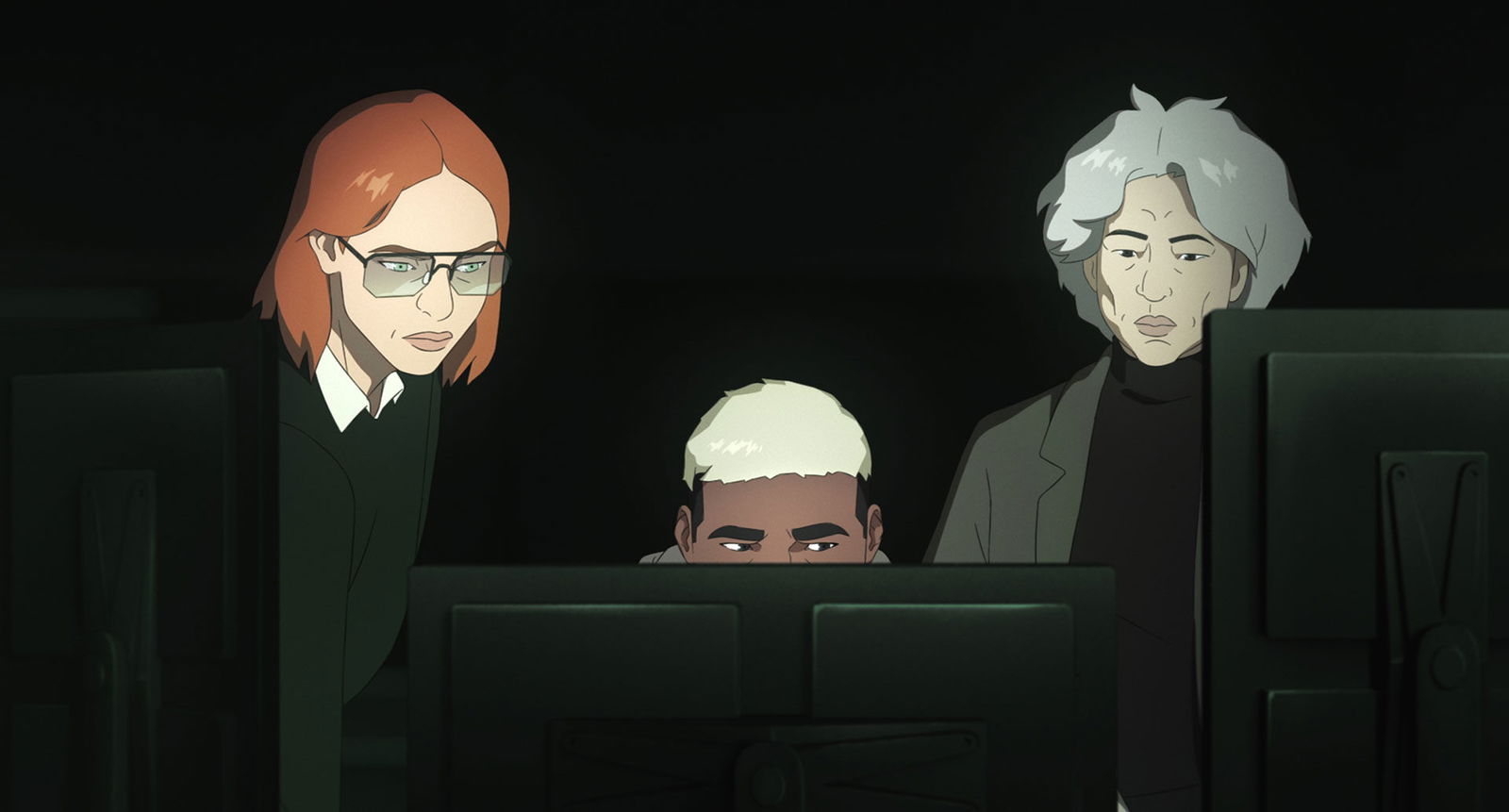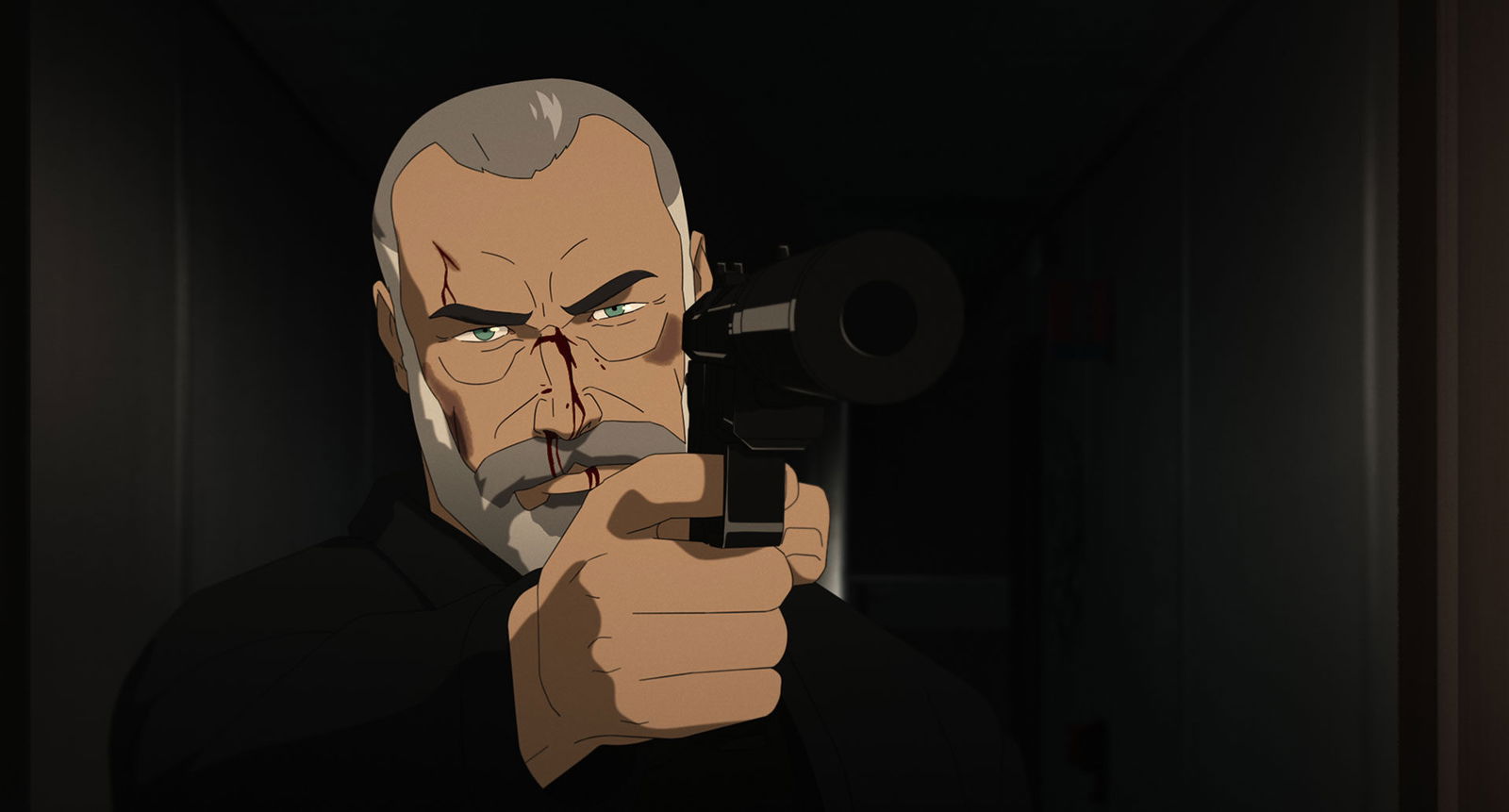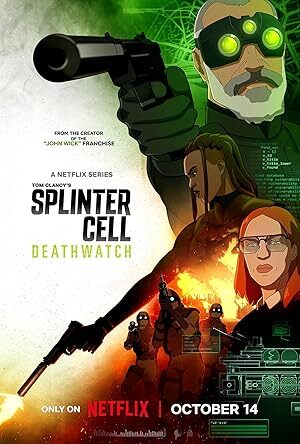It has been a while since we last saw a dedicated Sam Fisher adventure, with Captain Laserhawk: A Blood Dragon Remix offering a brief taste of the character in a Netflix series. But the time has finally come for the legendary operative to come out of retirement in Splinter Cell: Deathwatch. Netflix and John Wick creator Derek Kolstad have brought the character back, and even in animated form, Fisher still packs a punch. The eight-episode series launched today, October 14th, presenting a darker, older version of the iconic spy voiced by Liev Schreiber, and it delivers on that grizzled spy ich…mostly.
I have to say, I like how Splinter Cell: Deathwatch begins: skipping the setup and dropping the viewer right into the action, wasting no time getting things started. The series opens with Fisher living in something close to retirement. When wounded Fourth Echelon agent Zinnia McKenna shows up at his door after a mission goes wrong, he is pulled back into the world of covert operations. What begins as a rescue quickly evolves into a global conspiracy tied to Fisher’s past, specifically events from the beloved game Chaos Theory. The villains are Diana and Charlie Shetland, siblings connected to Douglas Shetland, an antagonist from that earlier title, so the concept is a strong start that rewards fans of the series with known entities.

Schreiber takes over vocal duties from franchise veteran Michael Ironside, and the transition works better than expected. His gravelly delivery echoes Ironside’s iconic performance while adding his own weight to the role. The decision to cast someone new still raises questions, especially since this version of Fisher is closer in age to Ironside than earlier iterations. Netflix has brought back original voice actors for other adaptations, making this choice seem more curious than necessary, but Schreiber delivers a solid performance nonetheless.
The show was animated by Sun Creature and Fost, with directors Guillaume Dousse and Félicien Colmet-Daage leading the project. The results are mixed. While the action sequences deliver fluid, realistic movement and visceral combat, the overall visual style leaves me a little cold. The animation feels clunky and lacks the polish viewers might expect after seeing what Netflix achieved with Arcane or Castlevania. It gave me Waking Life vibes—yes, I’m old enough to make that reference—and no, that’s not a good thing for a series based on such a polished franchise. For a property built on light and shadow, Deathwatch misses the chance to experiment with something more visually daring.
When Splinter Cell: Deathwatch gets out of its own way and dives into the action, it delivers, offering striking and often brutal fights that are sometimes hard to watch—in the best possible way. The combat feels lifted from Kolstad’s live-action work on John Wick, with clever gunplay and vicious hand-to-hand choreography. The animation team captures the weight and impact of every strike, making viewers wince when knives connect and bullets find their mark. These moments are genuinely thrilling and hint at what the series could have been with a sharper focus.

Having said all that, and while I appreciate what the show brings to the screen, I can’t help but feel it’s oddly disconnected from what made Splinter Cell so engaging and endearing. The stealth gameplay rewarded patience and tactical thinking, but the series opens with one strong stealth sequence before abandoning that approach for standard spy-thriller action. The rest of the season gets bogged down in middling subplots and villain monologues that drain tension rather than build it, with much of the later action favouring direct conflict over the patient, meticulous stealth the character is known for. That’s not to say it’s bad—it just misses the point of the series in a noticeable way.
“When Splinter Cell: Deathwatch gets out of its own way and dives into the action, it delivers, offering striking and often brutal fights that are sometimes hard to watch—in the best possible way.”
McKenna, voiced by Kirby Howell-Baptiste, brings a welcome dynamic to the series. Her blunt, aggressive approach contrasts well with Fisher’s calculated methods. The partnership between old and new operatives works, even if the supporting cast around them feels generic. Diana and Charlie Shetland never quite rise to the level of memorable antagonists, and their motivations feel borrowed from every other power-hungry villain story.
Kolstad’s script leans too heavily on familiar beats. Remove Fisher and the night-vision goggles, and you’re left with a conspiracy narrative that could fit almost any spy franchise with minimal changes. Fans starved for Splinter Cell content will find enough here to scratch that itch, but the series lacks the distinctive identity that helped the games become cult classics.

Splinter Cell: Deathwatch falls into the same trap as other video game adaptations, such as Halo and Resident Evil, borrowing recognizable elements without capturing what made the source material special. I would have much preferred the same attention given to Castlevania or Devil May Cry—staying true to the core of the franchise while offering fresh, distinctive takes on its characters.
Splinter Cell: Deathwatch is a solid action thriller that happens to feature Sam Fisher—and that’s okay. The series captures some of the tense spy moments we’ve come to expect from Tom Clancy properties, but never quite reaches the high notes or distinctive tone that made the Splinter Cell games so special. Strong performances and well-animated combat sequences can’t make up for a generic story that never fully embraces the stealth and tension that defined the franchise.





